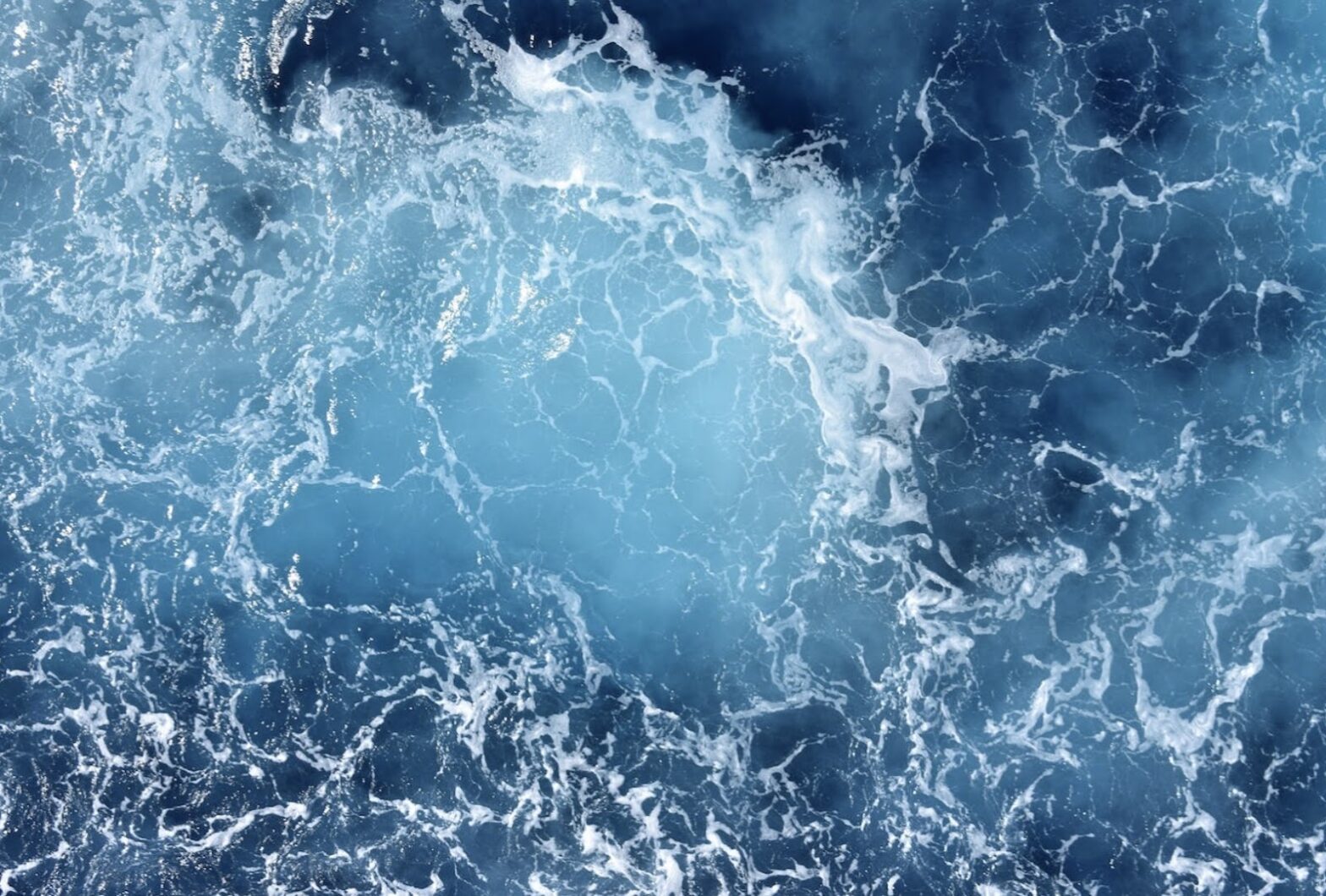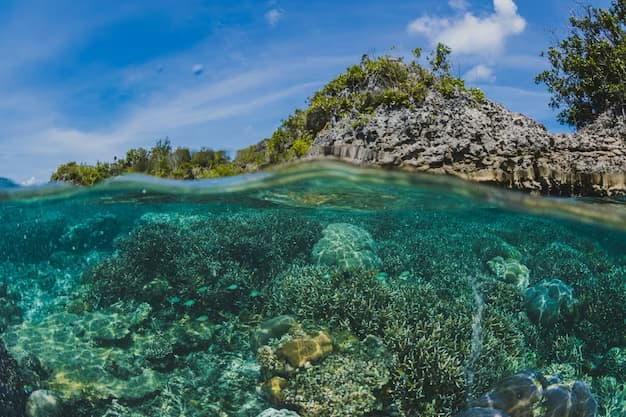The Pacific Ocean, a name derived from the Portuguese “pacifico,” meaning “peace,” was bestowed its name by Ferdinand Magellan in 1521, enchanted by its calm waters. This vast body of water, first witnessed by European eyes when Vasco Nunez de Balboa stood atop a Panamanian peak in 1513, has been a subject of fascination and study for centuries.
So What About Pacific Ocean Fun Facts?
- Origins of the Name: The Pacific Ocean owes its serene name to Ferdinand Magellan, a Portuguese explorer who, upon encountering its calm waters during his circumnavigation of the globe, felt compelled to name it “Mar Pacifico.” This act of naming not only reflected the ocean’s peaceful demeanor at the time but also marked a significant moment in human history, where the vastness of the Earth’s waters was being understood and appreciated. Magellan’s expedition, which was fraught with danger and discovery, thus left a lasting legacy through the naming of this ocean, emphasizing the human desire to connect with and comprehend the natural world;
- First European Glimpse: Vasco Nunez de Balboa’s sighting of the Pacific Ocean in 1513 stands as a monumental event in the annals of exploration. His journey through the dense forests of Panama to the mountain peak where he first witnessed the vast ocean laid the groundwork for future explorations and interactions with the Pacific. Naming it “Mar del Sur,” Balboa highlighted its position relative to the New World, igniting European imaginations and ambitions towards this uncharted territory. This moment not only symbolized the European encounter with the Pacific but also the beginning of a new era of global exploration and conquest, deeply impacting the history and cultures of the Pacific Rim countries;
- Cartographic Recognition: Abraham Ortelius, a pioneering Flemish geographer, made a significant contribution to the mapping of the world by naming the Pacific Ocean “Maris Pacifici” in his atlas. This act of cartographic naming was not merely a form of documentation but also a declaration of the ocean’s vastness and tranquility, as perceived by the Europeans of the time. Ortelius’s atlas, being the first of its kind, served as a crucial tool for navigators and explorers, further embedding the Pacific Ocean into the global consciousness. Through his work, Ortelius bridged the gap between exploration and cartography, enabling a more connected and navigable world;
- Evolution of its Name: The transition from the “Sea of Magellan” to the “Pacific Ocean” in the 18th century marked a significant shift in nomenclature, reflecting the expanding knowledge and changing perceptions of this vast body of water. This evolution of its name from one tied to a specific explorer to a more descriptive term underscores the ocean’s growing importance in global navigation, trade, and geopolitical affairs. As the largest and deepest of the Earth’s oceanic divisions, the Pacific’s name became synonymous with adventure, mystery, and the endless possibilities of the unknown, fostering a maritime culture that sought to uncover its secrets;
- Geographic Span: Encompassing an area from the Americas in the east to Asia and Australia in the west, the Pacific Ocean’s geographic span is unparalleled. This vast expanse not only houses a myriad of ecosystems and species but also serves as a stage for significant climatic and geological phenomena. The ocean’s influence extends beyond its physical boundaries, affecting global weather patterns, biodiversity, and human cultures. Its shores touch diverse landscapes and societies, each with unique relationships to the sea, from the fishing villages of the South Pacific to the bustling ports of the Asia-Pacific rim, highlighting the ocean’s role in shaping human history and civilization;
- Bisected by the Equator: The division of the Pacific Ocean into the North and South Pacific by the equator is more than a mere geographic distinction. It signifies the varied climatic zones and oceanic currents that characterize each hemisphere, influencing marine life, weather patterns, and human activities. This natural division also marks the boundary between contrasting ecological zones, from the rich biodiversity of the Coral Triangle in the western Pacific to the vast, nutrient-rich waters of the northern Pacific. The equator’s role as a dividing line thus encapsulates the dynamic and diverse nature of the Pacific, showcasing its significance as a driver of global climate and a key player in the Earth’s ecological balance;
- Ocean Currents: The Pacific Ocean’s currents, flowing clockwise in the north and anti-clockwise in the south, are crucial to understanding the ocean’s impact on global climate systems and marine ecosystems. These currents, driven by wind patterns and the Earth’s rotation, facilitate the distribution of heat and nutrients across vast distances, supporting a wide range of marine life. They also play a vital role in navigation and have historically shaped the routes of explorers, traders, and sailors. The study of these currents not only reveals the intricate connections within the Pacific ecosystem but also highlights the ocean’s influence on weather phenomena such as El Niño and La Niña, illustrating the interconnectedness of the natural world;
- Unparalleled Size: It is the largest ocean, covering 65,436,200 square miles;
- Surpassing Earth’s Landmass: The Pacific’s area exceeds the combined landmass of all continents;
- Volume of Water: It contains 171 million cubic miles of water, over half of the world’s oceanic water;
- Deepest Depths: The Pacific boasts the deepest ocean trench, with the Mariana Trench’s Challenger Deep at 35,837 feet;
- Volcanic Activity: The Pacific basin, home to about 75% of the world’s active volcanoes, forms the “Ring of Fire,” a path notorious for its seismic activity. This ring is a direct consequence of the tectonic movements and subduction zones around the ocean’s edges, leading to frequent and sometimes devastating volcanic eruptions. These geological phenomena not only shape the region’s landscape but also significantly impact the local and global climate, biodiversity, and human settlements, making the Pacific both a cradle of life and a zone of natural disasters;
- Island Count: Hosting between 25,000 and 30,000 islands, the Pacific Ocean has the highest number of islands compared to any other ocean. This vast array of islands spans from the Arctic Circle down to the southern extremities near Antarctica, embodying a diverse range of ecosystems, cultures, and histories. These islands, formed through volcanic activity, tectonic movements, and coral growth, offer unique insights into evolution, human migration, and adaptation, serving as natural laboratories for scientific research and conservation efforts;
- Indonesia’s Archipelago: Dominating over 60% of the Pacific’s islands, Indonesia’s archipelago, with more than 18,000 islands, is a testament to the Pacific’s dynamic geological history. This sprawling nation not only boasts a rich biodiversity but also a complex mosaic of cultures and languages, making it a focal point for studies on human society, natural habitats, and the challenges of sustainable development. Indonesia’s strategic location along vital maritime routes further underscores its importance in global trade, geopolitics, and cultural exchange, highlighting the Pacific’s role in connecting disparate worlds;
- Famous Archipelagos: The Pacific is dotted with famous archipelagos like Hawaii, Fiji, Japan, and New Zealand, each offering unique natural wonders and cultural heritage. These islands are renowned for their breathtaking landscapes, rich biodiversity, and vibrant cultures, attracting travelers and researchers alike. They serve as hubs for ecological, geological, and anthropological studies, providing invaluable insights into the processes of island formation, species evolution, and human adaptation to isolated environments. Their significance extends beyond their shores, influencing global arts, traditions, and economies;
- Gradual Shrinking: Due to tectonic shifts, the Pacific Ocean is gradually shrinking by about 1 inch each year. This slow but steady contraction is part of the Earth’s dynamic geological cycle, reflecting the ongoing movements of tectonic plates. Such changes, while subtle, have long-term implications for global geography, potentially altering coastlines, seabed resources, and even climate patterns. This phenomenon underscores the importance of geoscientific research in understanding our planet’s past, present, and future, highlighting the Pacific’s role in the grand tapestry of Earth’s geological history;
- Temperature Range: The temperature in the Pacific Ocean exhibits a broad range, from chilling −1.4°C near the poles to a warm 30°C at the equator. This variance influences marine life distribution, weather patterns, and oceanic currents. The diverse thermal gradients support a wide array of ecosystems, from polar species adapted to cold waters to vibrant coral reefs thriving in warm tropical zones. Understanding these temperature variations is crucial for predicting climate change impacts, managing fisheries, and protecting marine biodiversity, reflecting the Pacific’s critical role in Earth’s climatic and ecological balance;
- The Great Barrier Reef: Located in the Pacific, the Great Barrier Reef is the largest living structure on Earth, visible from space. This massive coral reef system, off the coast of Queensland, Australia, is a biodiversity hotspot, housing thousands of marine species. Its sheer size and biological diversity make it an invaluable asset for scientific research, conservation efforts, and sustainable tourism. However, it faces significant threats from climate change, pollution, and overfishing, highlighting the need for global efforts to preserve this natural wonder for future generations;
- Economic Importance: Over 60% of the world’s fish come from the Pacific;
- Global Impact: It is touched by five continents, making it the most far-reaching ocean;
- Source of Earthquakes: Almost 90% of global earthquakes originate in the Pacific;
- Krakatoa’s Eruption: The 1883 eruption was one of the most devastating volcanic events;
- Abundance of Atolls: The majority of the world’s atolls are in the Pacific;
- Ancient Navigation: The Pacific has been navigated for over 5,000 years, starting with the Austronesian peoples;
- Natural Resources: Large deposits of oil and gas are found in the Pacific, though challenging to extract;
- Pollution Crisis: Pollution levels have increased dramatically over the last 40 years;
- The Wandering Albatross: Home to the bird with the world’s largest wingspan;
- El Niño Phenomenon: A periodic warming that significantly impacts global weather patterns;
- Aviation Milestone: Charles Kingsford Smith’s historic trans-Pacific flight in 1928;
- Second-Largest Island: New Guinea is located in the Pacific, second only to Greenland in size;
- Bordering Nations: Fifty-five countries have coastlines along the Pacific;
- Typhoon Zone: Known for its powerful tropical cyclones, causing significant destruction;
- Western Entry: Abdel Tasman was the first to enter the South Pacific from the west;
- Unique Marine Life: The discovery of the Yeti Crab in 2005 highlighted the ocean’s diverse species;
- Smallest Country: Nauru, in the South Pacific, is one of the world’s smallest countries;
- Most Isolated Island: Palmerston, part of the Cook Islands, exemplifies remoteness;
- Largest Coral Atoll: The Christmas Islands in Kiribati feature the world’s largest atoll;
- The Blue Whale: The largest animal on Earth, the Blue Whale, resides in the Pacific;
- Dangerous Marine Life: The textile cone snail, with its lethal venom, is among the ocean’s hazards;
- Continued Exploration: Despite centuries of study, the Pacific Ocean continues to reveal new mysteries and remains a crucial area for scientific research, environmental conservation, and understanding global climatic patterns.
To Wrap Up
In conclusion, the Pacific Ocean, with its vast expanse and profound depths, is a marvel of the natural world that continues to intrigue and inspire. From its historical naming to its role in global weather patterns, economic significance, and ecological diversity, the Pacific encapsulates the dynamic interplay between nature and human endeavor. Its waters, teeming with life, not only harbor the largest and smallest of marine species but also serve as a critical conduit for international trade and cultural exchange. As we navigate the challenges of environmental degradation and climate change, the Pacific Ocean stands as a reminder of the delicate balance we must maintain to preserve this invaluable global asset. Its continued exploration and study are essential, not only for unlocking the secrets of the deep and advancing scientific knowledge but also for fostering a sustainable relationship with our planet’s largest oceanic treasure. The Pacific, with its endless mysteries and untapped potential, beckons humanity to a future where respect for nature and technological advancement go hand in hand, ensuring its preservation for generations to come.



